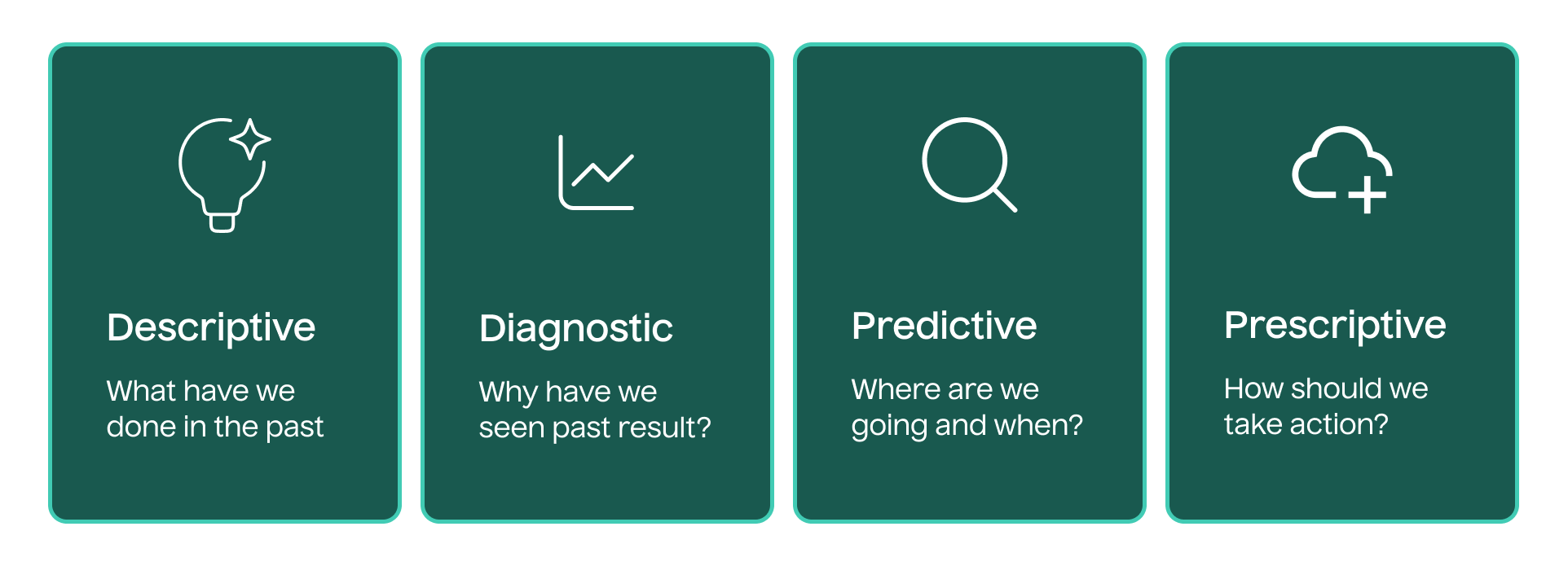Almost every other marketing measurement vendor seems to have the perfect fix until you take a closer look. Tools designed for specific problems are stretched beyond their capabilities, leaving marketers with incomplete insights and questionable strategies. Whether it’s outdated attribution models trying to stitch together fragmented user paths or MMM vendors claiming their models can answer every marketing question, the industry is rife with overpromises.
The result? Marketers are left navigating a sea of solutions that don’t fully address their needs, often creating more confusion than clarity. It’s not that these tools don’t work; they’re misapplied, forcing marketers into a cycle of trial, error, and inefficiency.
If marketing is to thrive in an era of complexity, it’s time to rethink measurement. Instead of chasing a single solution for every problem, the key lies in using the right tools for the right questions. Traditional tools might give you data, but actionable insights? That’s a whole different ballgame.
Enter modern marketing intelligence, or what we call marketing intelligence 4.0, which is the next era of unified reporting, measurement and agentic AI that helps marketers move away from fragmented dashboards to proactive, prescriptive actions.
This blog will explore how modern marketing intelligence empowers marketers to overcome these challenges, optimize budgets and drive growth in an increasingly competitive landscape. Let’s dive in!
Evolution of marketing intelligence
Marketing intelligence, and analytics in general has evolved significantly, mirroring the progress of data analytics. The journey spans four distinct stages: Descriptive, diagnostic, predictive, and finally, prescriptive where we stand today. Each stage represents a leap in how marketers utilize data to make decisions.

Stage 1: Descriptive analytics (the what)
In its early stages, marketing intelligence focused on understanding past performance. Tools were designed to just answer, “what happened?” Marketers relied on basic reporting to analyze historical trends, such as website visits or campaign engagement rates. While this offered valuable hindsight, it lacked depth in uncovering the reasons behind the results.
Stage 2: Diagnostic analytics (the why)
As data sophistication grew, diagnostic analytics entered the scene, asking, “why did this happen?” This phase enabled marketers to dig into past data and identify patterns, uncovering root causes of performance. For example, a sudden dip in conversions might be linked to seasonal factors or competitor activity. Still, diagnostic analytics remained backward-looking, offering explanations but no foresight.
Stage 3: Predictive analytics (the when and where)
The third stage brought predictive analytics, which used models and algorithms to forecast future outcomes. This stage answered, “where are we going, and when?” Marketers began predicting campaign performance and customer behaviors, using tools like predictive lead scoring and churn modeling. While powerful, this phase focused on probabilities rather than actionable strategies.
Stage 4: Prescriptive analytics (the how)
Today, we’ve entered the era of prescriptive analytics, in fact going beyond and pioneering the marketing intelligence maturity. This stage answers the crucial question: “how should we take action?” Powered by AI and machine learning, prescriptive analytics doesn’t just forecast outcomes; it provides recommendations on the course of next best action.
For example:
How to optimize budgets across channels for maximum ROI.
Which campaigns to prioritize based on incremental impact.
When and where to adjust strategies in real-time to capitalize on trends.
Modern marketing intelligence operates firmly in the prescriptive stage, layering incrementality-based insight from unified marketing measurement (UMM) on top of your business intelligence. It bridges the gap between raw data and real-world actions, enabling marketers to make precise, proactive decisions that drive measurable growth.
The case for blending unified reporting with unified measurement
Traditional unified reporting (UR) has primarily focused on consolidating fragmented data sources to provide a cohesive view of performance across channels and campaigns. While this approach offers clarity on what happened, it often relies on platform-reported metrics, which may not fully capture the true incremental impact of marketing activities.
Lifesight Unified Marketing Measurement (UMM) tool addresses this gap by layering incrementality-based insights on top of reporting. It moves beyond platform-reported data by incorporating methodologies like marketing mix modeling (MMM), causal attribution, and incrementality testing. This ensures that financial reporting reflects actual marketing contributions rather than skewed or inflated platform metrics.
By blending unified reporting with UMM, marketers gain access to more accurate insights into questions like:
- What portion of conversions were truly incremental versus baseline?
- How much of the reported ROI aligns with actual business outcomes?
- Where should resources be allocated to maximize marketing’s contribution to overall profitability?
Once these incrementality insights are established, marketers can integrate them into prescriptive tools, such as AI-powered recommendations or Marketing Intelligence Agents (MIAs), to enable data-driven decisions and actions. This combination ensures financial reporting and marketing strategies are aligned with real, measurable outcomes, driving smarter budget allocation and long-term growth.
Benefits of marketing intelligence 4.0
Modern marketing intelligence equips marketers with the tools they need to thrive in an increasingly complex ecosystem. Here’s how it revolutionizes marketing:
- Unlock incrementality insights for smarter investments
Modern marketing intelligence platforms enable marketers to measure true incremental impact, identifying which campaigns drive genuine growth. By leveraging the UMM framework, marketers can make informed decisions on budget allocation, ensuring every dollar is directed toward channels and strategies that maximize ROI.
- Seamless unified reporting for a complete picture
Say goodbye to fragmented data and siloed platforms. Unified reporting centralizes marketing and finance metrics into a single cohesive view, eliminating inconsistencies and enabling holistic performance analysis. This ensures marketers have reliable insights, whether tracking TikTok performance, Google Ads ROI, or offline media impact—all in real-time.
- Real-time optimization with AI-powered decisioning
Lifesight’s marketing intelligence integrates AI agents that go beyond traditional analytics. These agents proactively analyze performance, identify underperforming campaigns, and recommend optimizations in real-time.
- From reactive to proactive with prescriptive analytics
Prescriptive analytics powers the next step in marketing intelligence by transforming predictive insights into actionable strategies. AI agents recommend the best course of action, from budget reallocation to channel prioritization, enabling proactive decision-making that boosts campaign efficiency and drives profitability.
- Accelerated insights for faster decision-making
With streamlined reporting and automated dashboards, marketing teams no longer need to sift through complex datasets manually. Instead, they can access intuitive visualizations and real-time updates, making collaboration across stakeholders more effective and speeding up decision-making cycles.
These benefits make marketing intelligence 4.0 the ultimate toolkit for confidently and precisely navigating today’s marketing complexities.
Key takeaways for 2025 and beyond
Modern marketing intelligence positions marketers for sustainable success in an increasingly competitive landscape by identifying incremental gains, optimizing budgets, and enabling real-time decision-making.
At the forefront of this transformation is Lifesight, whose unified reporting feature and marketing intelligence agents (MIAs) take intelligence beyond analytics. By combining business intelligence with unified marketing measurement and layering it with AI-driven recommendations, marketers can now seamlessly predict, decide, and act.
Ready to future-proof your marketing strategy? Book a demo with Lifesight today!
You may also like
Essential resources for your success
















